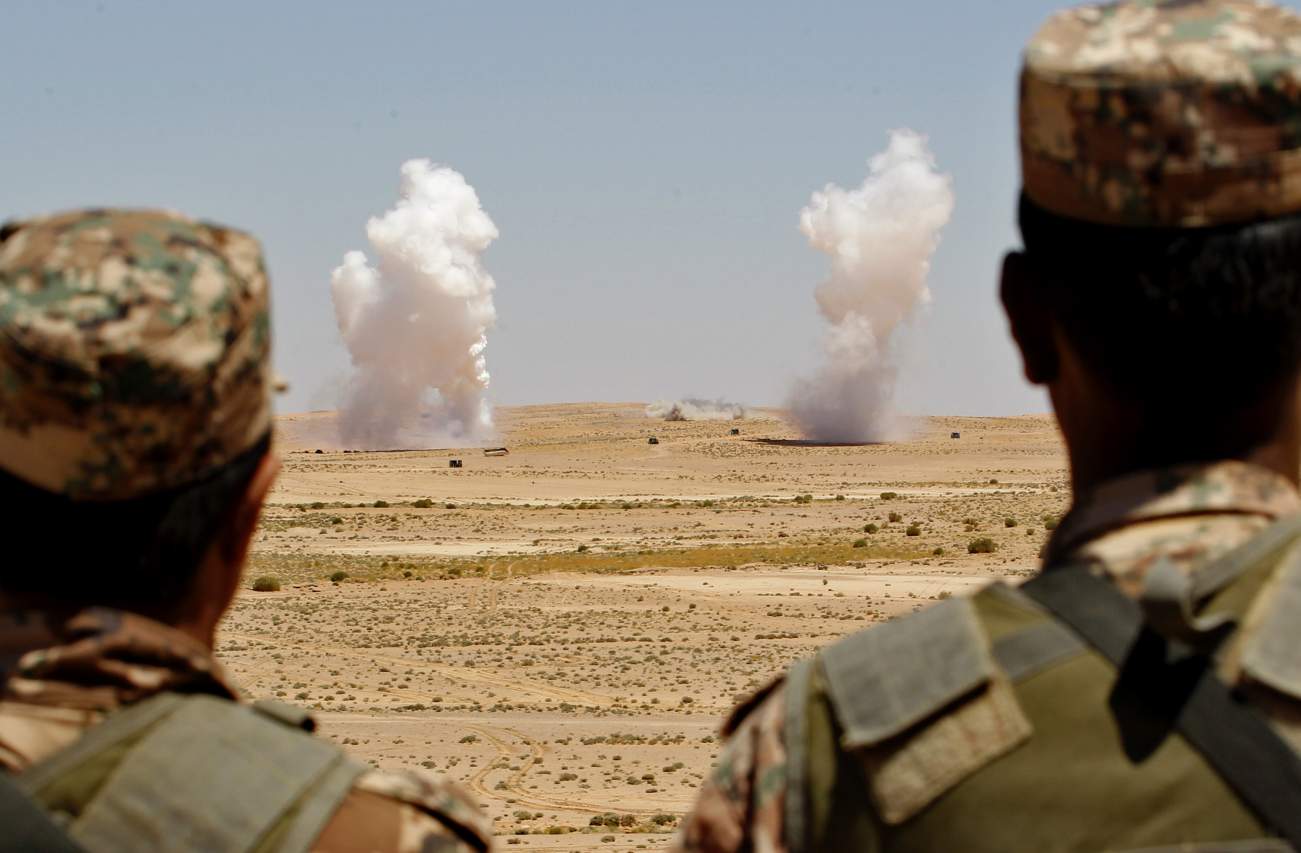by Seth Jones
 Among the Trump administration’s most significant national security decisions has been the shift from counterterrorism to inter-state competition. The United States is increasingly engaging in global rivalry with “revisionist” states like China, Russia, Iran and North Korea. To do this well, some U.S. policymakers have argued that the United States needs to develop capabilities to fight—and win—conventional and possibly even nuclear wars against these states if deterrence fails. As the National Defense Strategy argues, “The surest way to prevent war is to be prepared to win one. Doing so requires a competitive approach to force development and a consistent, multiyear investment to restore warfighting readiness and field a lethal force.”
Among the Trump administration’s most significant national security decisions has been the shift from counterterrorism to inter-state competition. The United States is increasingly engaging in global rivalry with “revisionist” states like China, Russia, Iran and North Korea. To do this well, some U.S. policymakers have argued that the United States needs to develop capabilities to fight—and win—conventional and possibly even nuclear wars against these states if deterrence fails. As the National Defense Strategy argues, “The surest way to prevent war is to be prepared to win one. Doing so requires a competitive approach to force development and a consistent, multiyear investment to restore warfighting readiness and field a lethal force.”
While there are good reasons to focus U.S. national security on balancing against global and regional state adversaries, it would be a mistake to assume that most future conflict will be conventional or even nuclear. It won’t. The United States remains the world’s preponderant military power. For Russia, Iran, North Korea and even China, conventional or nuclear war with the United States would be risky and prohibitively costly. What’s more, America’s struggles in Afghanistan and Iraq suggest that the U.S. military is vulnerable when faced with adversaries that resort to irregular strategies, operations and tactics.
These realities suggest that competition between the United States and its main adversaries will likely be irregular—not conventional. Russia will likely continue to focus on a suite of overt and covert actions, from supporting state and nonstate proxies in Syria, Ukraine and potentially the Baltics to information warfare. Iran will attempt to expand its power through proxies in Lebanon, Syria, Iraq, Yemen, Afghanistan and Bahrain—not by amassing a more potent army, navy or air force capable of fighting conventional battles against the United States. China is already spreading its influence in the Pacific by utilizing economic coercion, conducting a sophisticated information campaign, and resorting to fishing vessels and other “grey zone” tactics to lay claim to islands. Even North Korea will likely continue to develop its special operations and cyber capabilities.
The future of conflict means that the United States needs to prepare to compete with these states not primarily with divisions, aircraft carriers and strategic bombers—but by, with, and through state and nonstate proxies, cyber tools, and overt and covert information campaigns. At the moment, however, the United States is ill-prepared for irregular competition.
While the United States needs to prepare for the possibility of conventional and nuclear war, neither will likely be the primary means of competition for at least two reasons.
First, the United States remains the dominant global military power. Its defense budget is still larger than the defense budgets of the next eleven countries in the world combined. More importantly, the United States’ land, air, naval, space and cyber capabilities are formidable. For Russia, Iran, North Korea and even China, conventional or nuclear war with the United States would be risky. The gap between the United States and China, in particular, is narrowing. Beijing is developing more accurate, long-range missiles; integrated air defense; fourth-generation fighter aircraft; enhanced naval power projection; more advanced space and counterspace capabilities; and nuclear forces, including a new generation solid-propellant intercontinental ballistic missile, the df-41. But U.S. military capabilities surpass those of its competitors.
Second, the costs of conventional and nuclear war are likely to be staggering. Over the past several years, the U.S. government and think tanks have conducted numerous wargames and analyses of conflicts with Russia in the Baltics, China in the Taiwan Straits and South China Sea, Iran in the Middle East and North Korea on the Korean Peninsula. The results are generally bleak. Most conclude that war could lead to tens or hundreds of thousands of dead soldiers and civilians, domestic unrest, billions of dollars in economic damages, a global economic downturn and the potential collapse of long-held alliances. In addition, these conflicts might escalate to nuclear war, raising the number of dead to millions of civilians, create far-reaching environmental destruction and trigger unthinkable global financial costs.
A U.S. war with China could reduce China’s gross domestic product (GDP) by between 25 and 35 percent and the American GDP by between 5 and 10 percent, according to a rand report. As the report concluded:
A long and severe war could ravage China’s economy, stall its hard-earned development, and cause widespread hardship and dislocation. Such economic damage could in turn aggravate political turmoil and embolden separatists in China.
Both the United States and China would also suffer huge numbers of military and civilian deaths and risk large-scale destruction of their military forces. If war expanded to include their allies, economic and casualty figures would skyrocket even further.
Wargames that involve a conflict between NATO and Russia, including scenarios with Russian forces invading one or more Baltic countries, often escalate to include the threat—or use—of tactical nuclear weapons. Even a conventional war in the region could led to substantial destruction. If one or both sides used nuclear weapons, the number of casualties would be virtually unthinkable.
No comments:
Post a Comment